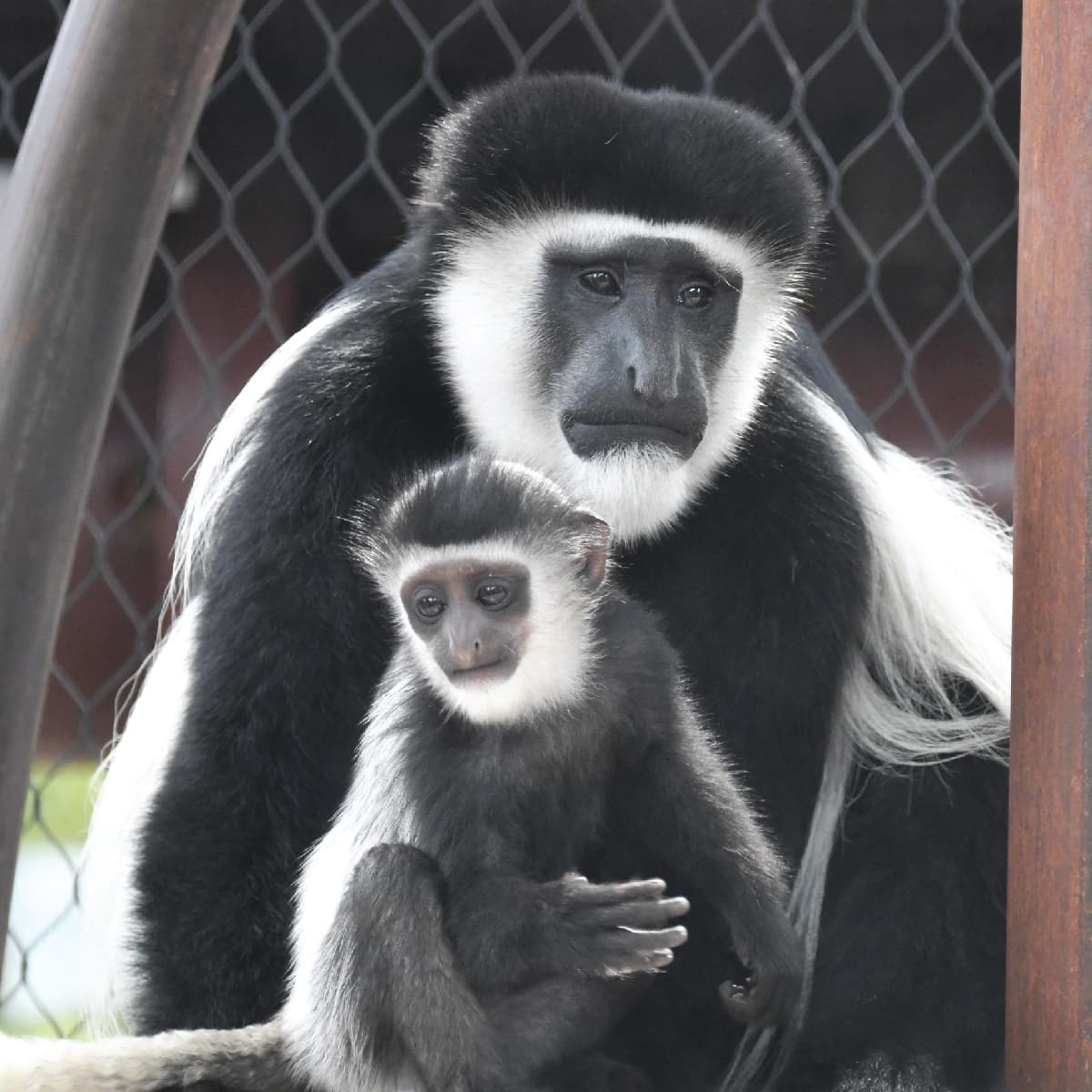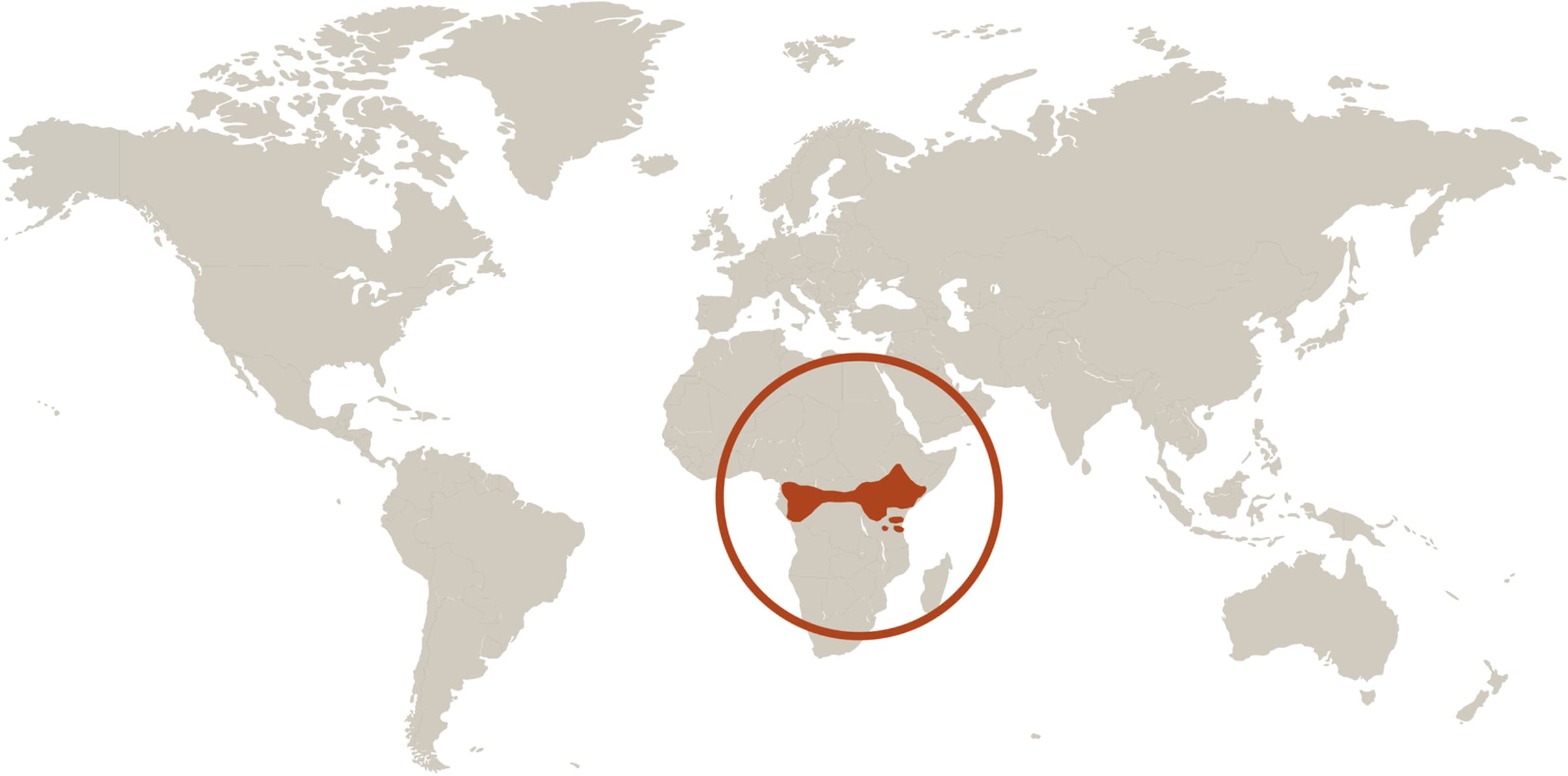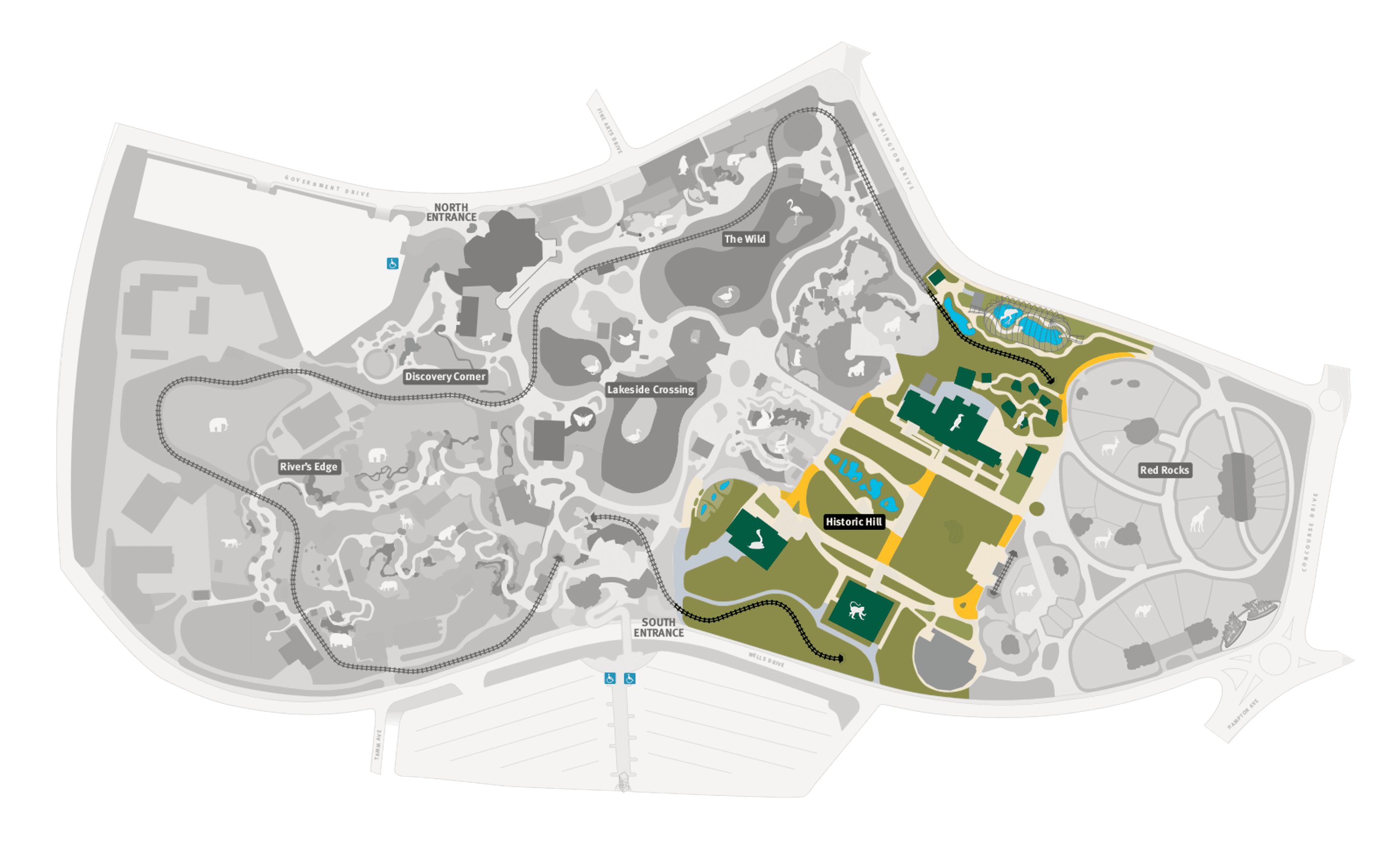
Guereza Colobus Monkey
Colobus guereza
Did you know?
- Guereza colobus monkeys are a part of the Cercopithecidae family, which they share with other African-Eurasian monkeys.
- The species is also known as the eastern black-and-white colobus, the Abyssinian black-and-white colobus, and the mantled colobus.
- They live in forests and wooded areas in Central Africa.
- The name “colobus” is derived from the Greek word for “mutilated,” because unlike other monkeys, colobus monkeys do not have thumbs.
- A female will birth one baby at a time.
Adaptations
Guereza colobus monkeys have long, white, cape-like hair on their backs that create a mantle. Scientists believe their mantles and fluffy tails act like a parachute for control while leaping. Colobus monkeys have a multi-chambered stomach, like a cow, which allows them to digest as much nutrients as possible from the food they eat. This adaptation allows these monkeys to live in areas that most monkeys could not. Their long limbs and light weight is beneficial to their arboreal lifestyle in the treetops.
Young and Family
Guereza colobus monkeys live in small to large troops with single or multiple adult males that, at most, have 15 individuals. A female will birth one baby at a time. Infants are born white with a pink face. Adult female members of the group will assist in caring for and carrying the young, known as ‘allomothering’, and the baby’s stand-out color helps the adults in the group keep track of the newborn. A young colobus will develop its final adult coloring around six months old.
Threat Level
- Unknown
- Common
- Near Threatened
- Threatened
- Endangered
- Critically Endangered
- Extinct in the Wild
Common
The Guereza Colobus Monkey is widespread and abundant.
Range
Central Africa
Habitat
Forests, wooded grasslands

We care about Guereza colobus monkeys
Guereza colobus monkeys suffer from habitat destruction and hunting due to the illegal bushmeat trade.
The Saint Louis Zoo participates in the Association of Zoos and Aquariums' Species Survival Program for Guereza colobus monkeys. We support a troop in the Primate House and Primate Canopy Trails at the Zoo, and we have supported many successful colobus births. Learn more about our conservation efforts.
Find this animal in Historic Hill

SAINT LOUIS ZOO ZONE
Historic Hill
Historic Hill is a lovely stroll through one of the oldest parts of the Saint Louis Zoo. From the 1904 World’s Fair Flight Cage to the Spanish architectural flavor of the 1920s in the Bird House, Primate House and Herpetarium to the finishing touches of our thoroughly modern exhibits, this area of the Zoo has a unique ambiance and a nostalgic history that make it a great destination.

